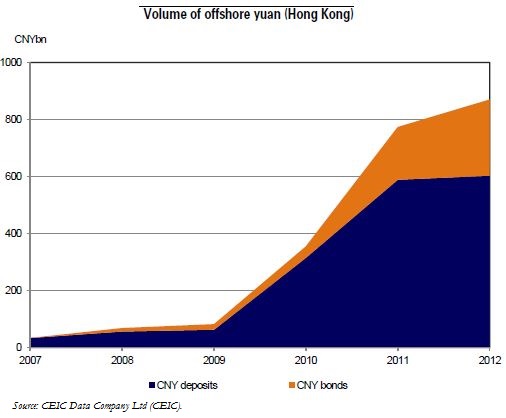Trésor-Economics No. 121 - Yuan internationalisation. A measured pace strategy
The internationalisation of the yuan refers to the process by which both residents and non-residents can use the yuan outside of mainland China for trade and financial purposes. For residents' to acquire yuan-denominated securities outside of China, greater investment opportunities inside mainland China are needed. This in turn means (i) opening up China's capital account, which is still closed for the most part, and (ii) developing domestic capital markets, which still lack liquidity and depth.
The gradual liberalization of interest rates and residents' opportunities to obtain higher returns on their savings should mitigate the risk of net capital outflows incurred by opening up the capital account. The development of China's capital markets should change business finance by offering alternatives to bank loans. Furthermore, the capital account should be opened up when the exchange rate is close to its equilibrium level. It should also be backed up by more foreign exchange flexibility in order to mitigate the risk of destabilising effects on the exchange rate.
The process of yuan internationalisation meets both trade and strategic objectives. It should reduce exchange-rate risk for Chinese companies and should thus contribute to the growth of China's trade, particularly towards other emerging economies. The yuan is the only currency of the top six global economies that is not yet a reserve currency, which-adds to the process an important political stake. However, there is still uncertainty about the scope and pace of yuan internationalisation. The Chinese government has been silent about its plans, saying little about the extent of capital account liberalization and exchange rate flexibility at the end of the process.
Internationalisation of the yuan carries a number of risks. Loosening capital controls could lead to more short-term volatility of exchange rates, and even interest rates. None of the economic players is really prepared to cope with such volatility today. Given the risks and the lessons learned from previous crises, the government is likely to move cautiously so as to acclimatise economic players gradually to the greater opportunities and greater risks created by freer capital flows.
